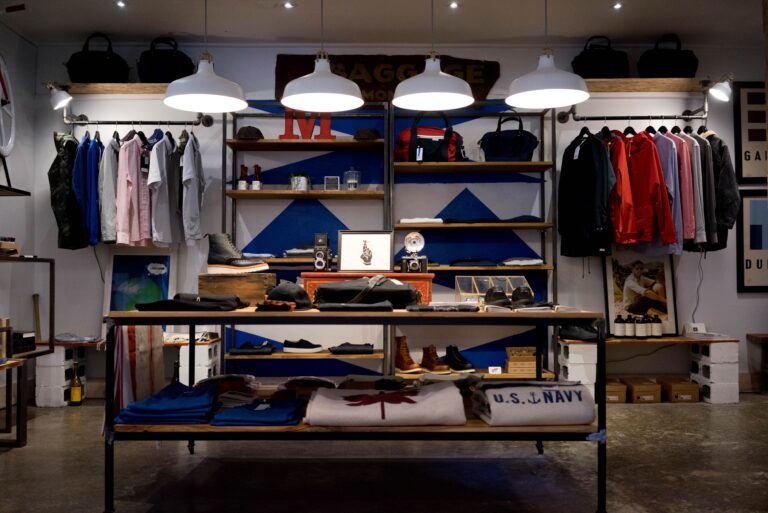By Christoph Eisenack, Retail & Hospitality Commercial Segment Leader, North America Systems & Services, Signify
Long gone are the days of spending hours at the mall walking around and popping into stores to simply browse for items. The COVID-19 pandemic has drastically altered our shopping behaviors. We are shopping less frequently and increasingly turning to eCommerce and alternative fulfillment models like buy online, pick up in-store/curbside (BOPIS). We also continue to be concerned about the health and well-being of other shoppers and store employees.
Therefore, it has never been more critical for retailers to adapt to this new normal to safeguard loyalty and retention. Research found that upwards of 60% of consumers who tried a new shopping behavior in the pandemic plan to stick with it post-crisis – this includes changing brand preferences.
The latest technology – connected lighting systems, powered by the Internet of Things – offers retailers a solution to this multi-faceted challenge: protecting customers and making them feel comfortable, while delivering a positive shopping experience.
Tapping into Shoppers’ Emotions with Lighting
Delivering an engaging and stimulating experience while shoppers spend less and less time in store is vital. The right lighting can help customers feel at ease and create a connection with brand(s). One study measuring the effects of lighting in supermarkets sales and customer behavior found that soft, pastel colors made customers feel happier and comfortable when shopping, while saturated colors increased stress levels.
Connected lighting makes it easy to design and control light settings and dynamic scenes to attract, engage and help convert shoppers. For example, retailers can use the functionality to increase brightness and contrast, and bring out the best of the colors and textures in displays, grabbing shoppers’ attention.
The ambiance and visual impact of a store has a profound effect on how we perceive it. But as more people increasingly turn to e-commerce, retailers also need to nail the “first time right” shopping experience.
Bringing the Benefits of Digital Shopping into the Store for Customers
According to Deloitte, approximately 54% have experienced stress from in-store shopping due to the pandemic. Connected lighting can facilitate “focused” shopping experiences that allow customers to efficiently find exactly what they need.
Visible light communications technology embedded within each LED ceiling light fixture can help consumers locate items in the store. Customers simply need to download the retailer’s store app onto their smartphone.
No longer do they have to wander aisles or engage with employees to find what they are looking for. They can use the app to conveniently navigate the store. The app can even offer in-store route guidance to ensure physical distancing, so shoppers feel more at ease.
Unlocking Retail Store Operational Efficiencies
Retailers can also reap rewards from connected lighting technology. The same indoor navigation capability can be used to help increase staff efficiency: from speeding up BOPIS order pick up and delivery of curbside goods, to providing the shortest routes from the back-office to the areas that need restocking.
Not only that, the system can provide important insights on your customers’ shopping behaviors. You can better understand foot traffic to optimize cleaning and maintenance, store density to comply with occupancy and physical distancing measures, and optimize store design and product placement decisions according to demand.
Adding an Extra Layer of Protection for Shoppers and Staff
Retailers can further transform the shopping experience by supplementing connected lighting systems with the power of UV-C lighting. With UV-C technology, you can add an extra, critical layer of disinfection to air, surfaces and objects, enabling you to continue store operations and provide service in an environment that is designed with safety in mind.
UV-C light sources are invisible to the human eye and work by effectively breaking down the DNA/RNA of viruses, bacteria and spores to render them harmless. People and animals should not be exposed to UV-C light, as it can harm their skin and eyes.
UV-C upper-air disinfection luminaires, however, can be used with shoppers and staff present, as they are installed at a height which, in combination with shielding and optics, prevents exposure to the light source. Air in the upper part of the store is constantly disinfected and recirculated using natural convection. A recent test of such luminaires found that 99.99% of the virus causing COVID-19 in the air of a room was inactivated within 10 minutes, and the virus was below detectable levels at 20 minutes.
In addition, stores can use UV-C chambers to disinfect small objects, such as self-scanners or walkie talkies.
Store lighting is everywhere and offers tremendous potential to help transform the shopping experience. COVID-19 has emphasized the need for retailers to embrace multi-faceted solutions that cater to evolving shopping behaviors and prioritize consumer comfort and well-being. With connected lighting technology, retailers can adapt to the challenges presented by the pandemic and prepare for our next normal.
About the author
 Christoph Eisenack has more than 15 years of experience in the electrical and electronic manufacturing industries in Europe and North America. He is currently responsible for Signify’s Retail and Hospitality connected lighting business and strategy in North America. He is focused on helping retailers leverage Internet of Things solutions, so they can derive value beyond illumination, including enhancing the shopper experience and lowering operational costs.
Christoph Eisenack has more than 15 years of experience in the electrical and electronic manufacturing industries in Europe and North America. He is currently responsible for Signify’s Retail and Hospitality connected lighting business and strategy in North America. He is focused on helping retailers leverage Internet of Things solutions, so they can derive value beyond illumination, including enhancing the shopper experience and lowering operational costs.
Related Articles

Hexnode CEO on how the “Holiday Illusion” is Masking the Risks of Retail’s Seasonal Workforce
The danger of seasonal hires is magnified not just by who is accessing the network, but when they are doing it. Sophisticated threat actors possess a deep understanding of the retail operational calendar.

The New Frugality: How Inflation and Tariffs Are Reshaping Consumer Spending
One of the most telling shifts is how shoppers approach decision-making. Where convenience once dominated, consciousness now plays a larger role. People are researching more before making a purchase, comparing prices across multiple platforms, and questioning whether they really need the product in the first place.

Embracing new concepts vs the return to brick-and-mortar
Balancing the return to physical retail and the development of new technologies to enhance customer experience and drive operational efficiency for long-term success.
Enartis to Acquire Parsec in Winemaking and Retail Deal
The deal will bring Enartis and Parsec together to help wineries manage every part of production more easily and efficiently, from grape to bottle.


 for the latest news and job opportunities in retail tech
for the latest news and job opportunities in retail tech 